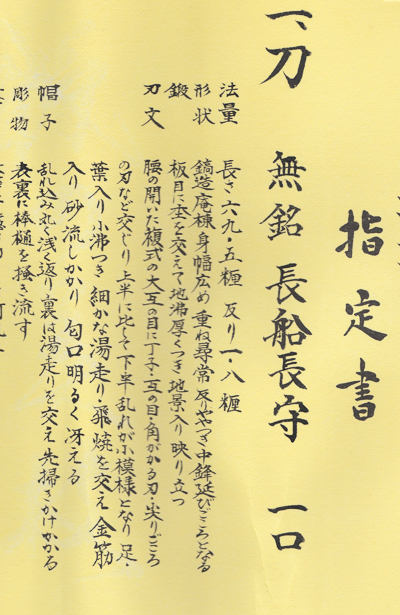Certifying authenticity
 In Japan, art and antiques have been somehow subjected to certification by some authority for a very long time. The most common way of doing that was an inscription on the object’s box, named tomobako: these wooden boxes were made originally for tea ceremony utensils such as tea bowls, spoons and dishes to certify that these items, generally of simple shape and then quite easy to imitate, was made by specific masters. These inscriptions could be written by the maker himself or by a descendant of a master of the same school from a later generation. Some items can even bear multiple certifications on nested boxes. Of course, the same kind of inscriptions can be found on paintings' boxes, where the biggest problem is separating original works from imitations so they can have a correct price when putting on sale.
In Japan, art and antiques have been somehow subjected to certification by some authority for a very long time. The most common way of doing that was an inscription on the object’s box, named tomobako: these wooden boxes were made originally for tea ceremony utensils such as tea bowls, spoons and dishes to certify that these items, generally of simple shape and then quite easy to imitate, was made by specific masters. These inscriptions could be written by the maker himself or by a descendant of a master of the same school from a later generation. Some items can even bear multiple certifications on nested boxes. Of course, the same kind of inscriptions can be found on paintings' boxes, where the biggest problem is separating original works from imitations so they can have a correct price when putting on sale.
Sword certification has a separate history: the Hon’ami family has been for centuries the official sword appraisers of the shogunate, issuing paper certificates called origami and sometimes writing the attributions on the sword’s tang itself. Later on, these attributions with other considerations were written also on the shirasaya, the “white sheath”, by various experts and collectors. After WW2 a government association for the preservation of the Japanese sword was created, still active nowadays, issuing certifications for signature authenticity and for the quality level of the sword (such as juyo token, “important sword”).
Following what was created for swords, the association for the study of Japanese armor is issuing papers to state that some items are “worth preserving” or even “important”, but this origami has never been considered that important and do not really affect a Japanese armor’s value or price; most of the excellent suite of samurai armor in collections or for sale do not have such papers and only a few dealers and collectors submit kabuto and armor for a certification.
A fact worth noting is that netsuke, a filed where signatures are imitated widely, have never considered “worth” certifying and all major studies on authenticity have been actually made by western collectors during the 20th century.
Copyright © 2016 - giuseppe piva - VAT: 05104180962

